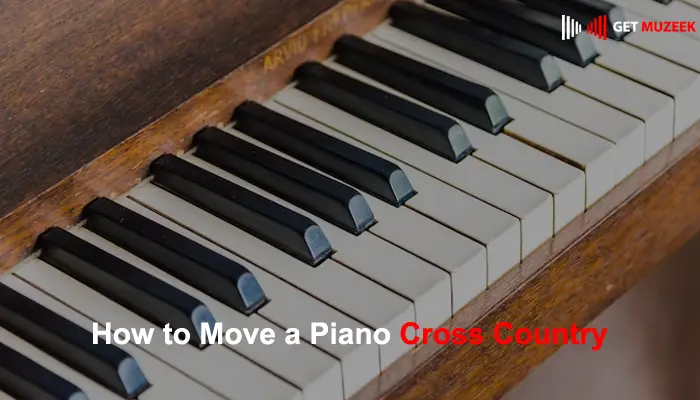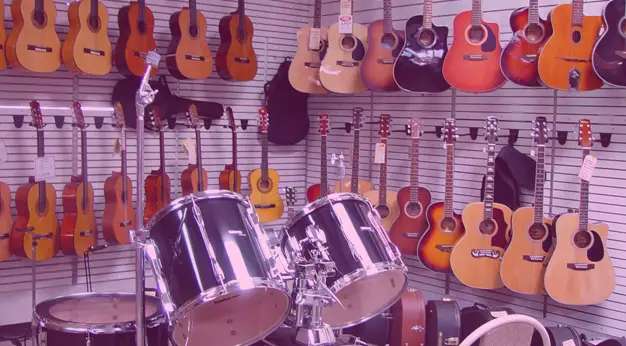
Moving a piano cross country can be a daunting task, requiring careful planning and execution to ensure the safety of this delicate instrument. Whether you are a professional musician, a piano enthusiast, or simply relocating, it’s important to know the right steps to take when transporting a piano across long distances.
In this comprehensive guide, we will provide you with valuable insights, tips, and tricks on how to move a piano cross country successfully.
Why Hiring Professionals is Crucial
Moving a piano cross country requires a high level of expertise and experience. Hiring professionals who specialize in piano moving is crucial for ensuring the safe transportation of your instrument.
These experts understand the intricate details involved in moving a piano, from disassembling and packing to handling and reassembling it at the destination. They have the necessary equipment, such as piano dollies, ramps, and padding, to protect your piano from damage during the move.
Moreover, professional piano movers are insured, providing you with peace of mind knowing that your valuable instrument is protected.
Preparing Your Piano for the Move
Before moving your piano cross country, proper preparation is key to avoid any potential damage. Here are some essential steps to follow:
- Secure loose parts: Ensure that all removable parts, such as the piano lid, legs, and pedals, are securely fastened or removed and properly packed.
- Protect delicate surfaces: Cover the piano’s delicate surfaces with moving blankets or padding to prevent scratches or dents.
- Tune the piano: It’s advisable to tune your piano before the move to minimize the risk of it going out of tune during transportation.
- Take photos: Document the piano’s condition before the move by taking clear photos from different angles. This will serve as evidence in case of any damage during transit.
Choosing the Right Transportation Method
Selecting the appropriate transportation method is crucial when moving a piano cross country. Depending on your budget, timeframe, and the distance involved, you have several options:
- Professional piano movers: Engaging the services of professional piano movers ensures the highest level of care and expertise. They have specialized equipment and vehicles designed specifically for piano transportation.
- Freight shipping: If you have a limited budget and are not time-constrained, you can consider shipping your piano through a freight service. Ensure that the piano is securely packaged and adequately insured.
- Rental trucks: For a more cost-effective option, you can rent a moving truck and transport the piano yourself. However, this requires careful planning, proper packing, and securing the piano inside the truck to prevent damage during transit.
Ensuring Adequate Packaging
Proper packaging is crucial to protect your piano during the cross-country move. Consider the following packaging tips:
- Use high-quality packing materials: Invest in sturdy, double-walled cardboard boxes, bubble wrap, packing tape, and furniture blankets to provide adequate protection.
- Wrap individual components: Disassemble the piano carefully, wrapping each component securely with bubble wrap or furniture blankets. Label each piece to ensure easy reassembly.
- Secure the keyboard lid: Close and lock the keyboard lid, or secure it with packing tape to prevent it from opening during the move.
- Protect the piano’s legs: Wrap the piano’s legs with furniture blankets and secure them with tape or ties to prevent any accidental damage.
Securing Insurance for Your Piano
When moving a piano cross country, it’s essential to ensure that your instrument is adequately insured. While professional piano movers generally provide insurance coverage, it’s important to understand the extent of coverage and any additional insurance options available.
If you choose to handle the move yourself or opt for a freight service, consider obtaining separate insurance coverage to protect your piano against any potential damage or loss.
Finding Reliable Piano Movers
Finding reliable piano movers is crucial for a successful cross-country move. Consider the following steps to find trustworthy professionals:
- Research: Conduct thorough research to identify reputable piano moving companies with a track record of safe and reliable piano transportation.
- Read reviews: Check online reviews and testimonials from previous customers to gain insights into their experiences with the moving company.
- Obtain multiple quotes: Request quotes from different piano movers and compare their pricing, services offered, and insurance coverage.
- Check licensing and insurance: Ensure that the piano movers you consider are properly licensed and insured. Ask for proof of insurance and any relevant certifications.
Obtaining Necessary Permits
When moving a piano cross country, you may need to obtain certain permits or comply with regulations depending on your specific route and destination. Consider the following:
- Interstate moves: If you are moving the piano across state lines, research the regulations and permits required by each state involved in the move. Some states have specific guidelines and restrictions for transporting large musical instruments.
- City permits: In certain cities, you may need to obtain permits for moving large and heavy items. Check with local authorities to ensure compliance with any necessary permits.
Planning Your Route
Planning the route for your cross-country piano move is crucial to ensure a smooth and efficient journey. Consider the following factors when determining the best route:
- Road conditions: Research the road conditions and potential obstacles along each route option. Choose routes that are well-maintained and suitable for transporting delicate cargo.
- Avoiding extreme weather: Consider the climate and weather conditions along the route. Try to avoid extreme weather conditions, such as heavy rain or snowstorms, as they can pose risks to the piano during transportation.
- Rest stops and accommodations: Plan for regular rest stops and overnight accommodations if necessary. Ensure that the chosen stops can accommodate the size and weight of the moving truck carrying the piano.
Considering Climate Control
Pianos are sensitive to changes in temperature and humidity, which can affect their overall condition and tune. When moving a piano cross country, it’s crucial to consider climate control to preserve the instrument’s integrity. Here are some tips:
- Maintain stable temperature: Keep the piano in a temperature-controlled environment, avoiding extreme heat or cold during transit.
- Avoid humidity fluctuations: Protect the piano from excessive humidity or dryness, as it can cause the wood to warp or keys to stick. Consider using moisture-absorbing packs or a humidifier/dehumidifier, depending on the prevailing climate conditions.
Managing the Logistics
Managing the logistics of a cross-country piano move involves coordinating various aspects to ensure a successful relocation. Consider the following logistics:
- Scheduling: Coordinate the move date and time with the piano movers or truck rental company, ensuring it aligns with your preferred timeline.
- Communication: Maintain open and clear communication with the piano movers, providing them with accurate pickup and delivery addresses, contact information, and any special instructions.
- Tracking: If using a professional moving company, inquire about their tracking system to monitor the progress of your piano during transit. This will give you peace of mind and help you stay informed about the piano’s location.
Frequently Asked Questions
How much does it cost to move a piano cross country?
The cost of moving a piano cross country can vary depending on various factors, including the distance, piano size, additional services required, and chosen moving company. On average, you can expect to pay between $1,000 to $3,000 for a long-distance piano move. It’s best to obtain multiple quotes from different movers and consider their pricing, services, and insurance coverage before making a decision.
Can I move a piano by myself?
Moving a piano by yourself is not recommended unless you have the necessary experience, equipment, and assistance. Pianos are heavy, delicate instruments that require specialized handling. Hiring professional piano movers ensures the safety of your instrument and minimizes the risk of damage.
What if my piano doesn’t fit through the door?
If your piano doesn’t fit through the door, professional piano movers have the expertise to disassemble the instrument and reassemble it at the destination. They will carefully remove the legs, pedals, and other removable parts to facilitate the safe transport of the piano.
Do I need to tune my piano after the move?
Yes, it’s advisable to have your piano tuned after the move. The change in environment, climate, and handling during transportation can cause the piano to go out of tune. It’s best to allow the piano to settle in its new location for a few weeks before scheduling a tuning session.
How long does it take to move a piano cross country?
The duration of a cross-country piano move depends on various factors, including the distance, route, and logistics involved. On average, it can take anywhere from a few days to a couple of weeks for the entire process, including packing, transit, and delivery. The moving company can provide you with a more accurate estimate based on your specific move details.
Are there any restrictions on moving a piano across state lines?
Yes, there may be restrictions and regulations when moving a piano across state lines. Some states have specific guidelines and permits required for transporting large musical instruments. Research the regulations of each state involved in your move and ensure compliance to avoid any legal issues.
Conclusion
Moving a piano cross country requires careful planning, adequate preparation, and the involvement of experienced professionals.
By following the steps outlined in this comprehensive guide, you can ensure a safe and successful relocation for your valuable instrument. Remember to research and hire reliable piano movers, obtain insurance coverage, and consider factors such as packaging, climate control, permits, and logistics.
With the right approach, your piano can be transported across the country with minimal stress and the utmost care.
Related Posts:
- How to Play G on the Piano
- How to Play Wake Me up Avicii Guitar Chords
- How to Play Hallelujah Chords Guitar: A Comprehensive Guide
- How to Play Eight Days a Week Chords
- How to Play Taylor Swift “You Belong With Me” Chords



